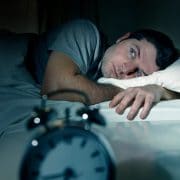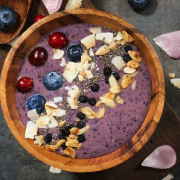10 tips for a successful wellbeing program
“Today’s best employers are no longer debating whether to invest in employee wellbeing – they are simply navigating how best to do so”
There no shortage of corporate wellness programs and approaches for companies who want to help their employees to be the healthiest, happiest and most productive versions of themselves.
With the gap between the youngest and oldest employees getting wider, there needs a solution that works for all stages of life. It’s harder today, too, because research is showing that many workers are more cynical about ‘workplace wellbeing’ than a decade ago. You will want to find a solution that people trust and is built to their needs, not the employer’s needs. Weighing up your options and considering all the factors requires time. Things like budget, internal resource, timing, accessibility, privacy and health focus areas (such as physical fitness, diet, sleep or mindset). In reality, more immediate priorities such as recruitment, performance management and dispute-handling may undermine your capacity to give an employee health strategy the time it deserves.
For anyone investing time and budget into employee wellbeing, the key message to senior executives and leaders is that they will expect to see improvements in workforce productivity, retention and engagement, plus organisational image (1).
Here are our 10 tips for a successful wellbeing program:
- Demonstrate leadership
The responsibility for people’s health doesn’t start and end with your Human Resources team. Many reports on workplace health in recent years have flagged the need for leaders to enable and embrace workplace wellbeing themselves. The National Institute for Occupational Health and Safety in the US (2) and key public figures in Australia (including former Victorian Premier and mental health advocate, Jeff Kennett) (3) have called for CEOs and senior leaders of organisations to strongly support and embrace any wellbeing program they roll out. As well as sending a strong message about wellbeing culture, such leadership can generate a better ROI. It has been reported that increasing participation rates can double or triple the ROI (4), and strong leadership can play a vital role in this.
- Clear, sincere communication
A major outcome of a recent global survey on the future of wellness at work was that the companies ranked highest for genuinely caring about their employees’ health were also more likely to have a wellbeing plan in place – but this was offset by a general tide of cynicism from employees. One of the biggest challenges for any corporate wellbeing initiative is getting employees to sign-up and truly identify what’s in it for them. A key
to success is communicating to employees from the outset that a wellbeing program is a win/win situation with benefits for both the individual and the organisation – not another KPI they will be measured against.
- Focus on the important stuff
It is very difficult to pick the most burning health issue affecting your people’s engagement or productivity from just looking around the room. The best wellbeing provider should be able to report aggregated findings from employees’ on-boarding health assessments to help you develop your approach. In the absence of any specific data for your organisation, it may be helpful to understand the top concerns of employers across the world (5).
In order of importance, they are:
• improving morale/engagement
• reducing absenteeism
• improving workplace safety
• improving productivity/presenteeism
- Integrated approach
Choose a program that takes an integrated and holistic approach. Active people tend to sleep better. Eating better helps you feel more energised and more sleep helps you to manage stress. Although this seems like common sense, many workplace health programs focus on a single lifestyle factor at a time. Having an integrated program that addresses most or all of these issues is the most effective strategy.
Top 4 health issues:
- stress
• physical activity/exercise
• nutrition/healthy eating
• workplace safety.
Having themed challenges as part of your strategy is also valuable. A shared focus on one health area with friends and colleagues gives a sense of increased connectedness and motivation. Allowing people a degree of flexibility to tailor their program to focus on their personal health concerns will also increase engagement.
- Digital approach
Choose a digital approach to reduce your cost and simplify delivery. While many workplace health programs have usually included an element of face-to-face delivery (talks, coaching sessions, health checks) and printed material (health risk assessments), research proves that a lower-touch digital approach is also effective (6), especially when it is interactive and includes an element of competition and gamification.
- Strong educational foundation
Ensure your program has a strong educational foundation that drives behaviour change.
With so many different fads and myths around health, you need to make sure you are investing in a program that is based on proven behavioural change strategies and that your workers are receiving research-based health insights. Programs built on the science of enhancing the intrinsic motivation of individuals improve success rates (7).
- Tools to measure progress
Great wellbeing programs will give participants a baseline to work from and measure their progress against as they go along. This can take many forms, such as an overall assessment score, comparisons against government or World Health Organization guidelines, or even the number of steps taken for specific challenges.
- Be strategic with financial incentives
Without the right communication, getting employees to engage with a wellbeing program is challenging. To boost initial participation or win back engagement when it drops, it can be tempting to offer rewards. Opinion is divided on when and how to use them effectively. Speak to your wellbeing provider about their thoughts on incentives and what measures they can offer to help you identify worthy winners and ensure fair weighting of reward if you do wish to offer them. Awarding people for a number of daily steps taken, for example, becomes a meaningless numbers game that rewards the people who are already active. Rewarding those showing the greatest (or a certain level of) improvement, however, levels the playing field for everyone.
Also, effective incentives don’t need to be limited to financial rewards. Try other incentives such as giving people a slightly longer lunch break to t in a workout or a walk; discounts on healthy lunch options; healthy options at morning teas and on staff birthdays; or a ‘no emails after a certain time’ policy. Better still, ask your staff what the roadblocks to them participating are and try to nd small ways to make it easier for them.
- Adapt your workplace
The traditional office-based workplace environment has been shown to have a negative impact on health and, therefore, productivity through the amount of time spent sitting. Where budget allows, you could consider sit-to-stand/stand-up workstations. Cost-free tactics include making more meetings stand- up meetings, encouraging staff to take walk-and-talk meetings, and incorporating a few short stints of movement into the day.
- Evaluate success
When evaluating success, remember these two questions…
1. Did my people benefit? The aim here is not to ascertain their personal health outcomes (those should be reported by your provider) but rather to determine how they felt about the opportunity to participate and their engagement and sentiment towards you as their employer.
2. Did it provide a return on investment? To evaluate the effectiveness of workplace health programs every effort should be made to calculate all costs, including staff costs, as well as
all benefits. Finding a program that minimises indirect costs should be a key selection factor.
For more information on Employee Health and Wellbeing, read our white paper here.
References
(1) Global Healthy Workplace, “Working Well: A Global Survey of Workforce Wellbeing Strategies”, 2016, https://www.globalhealthyworkplace.
org/casestudies/2016_Global_Wellbeing_Survey_Executive-Summary.pdf.
(2) Health. NIfOSa. “Essential elements of effective workplace programs and policies for improving worker health and wellbeing”. October, 2008.
(3) The Australian, “Wellbeing survey tied to CEO pay bonuses”, 2016, https://www.dropbox.com/s/paehu5hwgb2pf15/Screenshot 2016-12-01
14.20.21.png?dl=0
(4) Chapman LS. “Meta-evaluation of worksite health promotion economic return studies: 2012 update”. Am J Health Promot. 2012
(5) “Global health risks: mortality and burden of disease attributable to selected major risks”, WHO Library, 2009.
(6) Bucks Consultants. “WORKING WELL – A Global Survey of Health Promotion, Workplace Wellness, and Productivity Strategies (Executive Sum-
mary)”, 2011, https://www.huschblackwell.com/newsandinsights/emerging-engagement-strategies-for-employee-wellness-02-10-2011
(7) Hendriksen IJ, Snoijer M, de Kok BP, van Vilsteren J, Hofstetter H. “Effectiveness of a Multilevel Workplace Health Promotion program on
Vitality, Health, and Work-Related Outcomes”





 You’re good all week, eating healthy food, having alcohol-free days and exercising. Then (thank God) Friday comes along. Time to hit the pub with friends, indulge in pizza for dinner or have a few wines while watching a movie. Saturday morning arrives and you may go to the gym followed by a huge brunch at your favourite cafe and maybe a slice of cheesecake. By Monday morning you’re feeling sluggish, tired guilty and like you’ve gone backwards.
You’re good all week, eating healthy food, having alcohol-free days and exercising. Then (thank God) Friday comes along. Time to hit the pub with friends, indulge in pizza for dinner or have a few wines while watching a movie. Saturday morning arrives and you may go to the gym followed by a huge brunch at your favourite cafe and maybe a slice of cheesecake. By Monday morning you’re feeling sluggish, tired guilty and like you’ve gone backwards. 
 Hugh Van Cuylenburg from
Hugh Van Cuylenburg from 

 The fact that fasting has been around in religion and different cultures for centuries should indicate that it isn’t as har
The fact that fasting has been around in religion and different cultures for centuries should indicate that it isn’t as har










